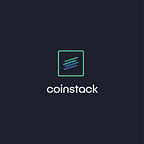Explained: The Difference Between an IPO, ICO and STO
Part 2
Inside of this edition of the Explained series we’re exploring the differences between IPO’s, ICO’s and STO’s. The goal of these posts are to help Coinstack readers gain insight into the most basic fundamentals of trading and the defining factors of the market. Previously we discussed the building blocks of an IPO and to recap:
- An IPO is the first time the public can purchase a stock of a previously private company
- When a company goes public they become extremely regulated by the SEC and have to follow a strict set of transparency guidelines for their investors.
- IPO’s have high barriers to entry in needing to be registered with a brokerage firm.
In this article we’ll be discussing what an ICO is and how it fundamentally differs from an IPO, as well as the advantages and disadvantages that accompany them.
What is an ICO? The ICO Basics.
An Initial Coin Offering is essentially the blockchain version of an IPO. Or in a boiled down fashion, this means that an ICO functions as a decentralized IPO, allowing access to everyone from around the world.
An ICO exists as an unregulated, decentralized IPO.
The ICO process manifests in a process where a company will create a specific amount of tokens that act representative of their stock or an important function in the company. This is referred to as tokenization. Once a company “tokenizes” their shares or functions, they launch an ICO and allow the public to purchase the tokens. Due to the underlying properties of the blockchain, users can invest in the company through an ICO regardless of their location or brokerage firm registration. Suddenly, where users used to have a certain amount of money and certifications to invest in an IPO, a user with $10 can invest from anywhere around the world. Companies now have access to all types of investors from the newest users to the battle-hardened enthusiasts.
You, the reader: There’s no downside to that! Right?!
Myself, the author: “Wrong.”
Regulatory agencies like the SEC exist with good reason. Where these ICO opportunities might spell more open doors for businesses, it means less protection for the consumer. The registration process a business has to go through with the SEC to launch an IPO is stringent and lengthy to protect the consumers and make sure they’re receiving legitimate investment opportunities. One of the largest downsides to an ICO is the amazing freedom that it brings, and those that might take advantage of it and the users through launching scam concepts, or projects never meant to succeed, only there to take the money of gullible investors. An ICO presents phenomenal opportunity to be a ground-floor investor, but it also is laden with the risks that accompany lack of regulation. With an ICO it’s even MORE important to take part in due-diligence.
To recap:
- An ICO is the unregulated and decentralized token sale form of an IPO
- With absence of regulation, investors have lower barrier to entry but take on increased risk.
After the conclusion of our introduction to IPO’s, ICO’s and STO’s series and the Coinstack community is familiar with the basics, we’ll be moving on to step-by-step instructional tutorials on how to actually participate in them. In our next installment we’ll discuss what an STO is and how these differ from IPO’s and ICO’s!
For more Coinstack content join us below in one of our many communities:
